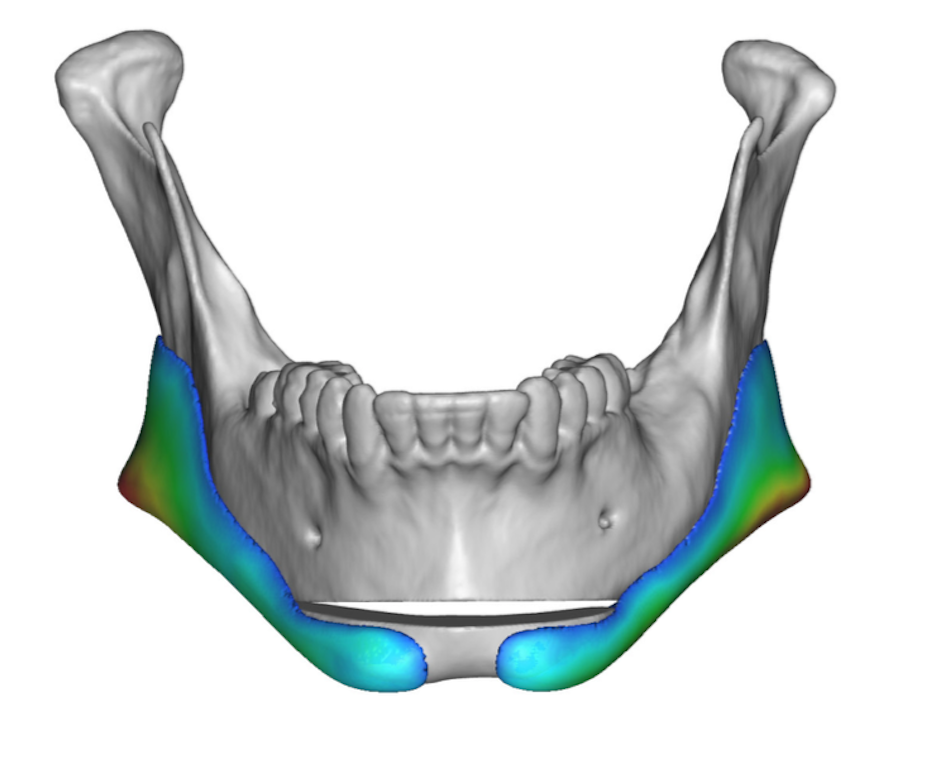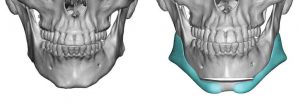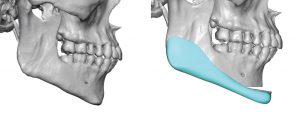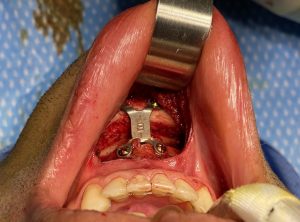The custom jawline implant is the most effective method of achieving a total jawline augmentation change. Its surface area coverage through its wrap around design alters all aspects of the face-neck transitional area through soft tissue release and expansion from the implant spacer on the bone.
The soft tissue expansion effect of the implant is uniquely felt in the chin area. Since the chin is a solitary projecting point its enveloping soft tissue is tighter than anywhere else along the jawline. As a result one must be cautious as to the implant load placed over the chin to ensure competent wound healing and prevention of excessive long term soft tissue atrophy. The exact volume of implant volume that is safe vs unsafe over the chin varies per each patient. It is the vertical elongation that affects the soft tissue chin pad more than a horizontal augmentation. But when the two are done together one must be extremely aware of these dimensional changes on the overlying soft tissue chin pad.

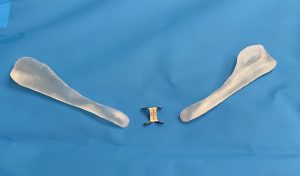
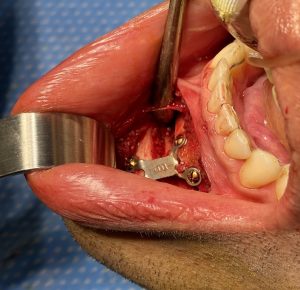
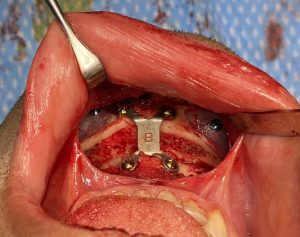

Taking advantage of the best properties of various lower jaw reshaping techniques, the combination of a chin osteotomy and custom implants for the rest of the jaw can be effectively used. The computer design process allows the implants to merge into the planned bony genioplasty in a predictable manner for a smooth jawline feel. This also conveniently obscures the step off from the back end of the bony genioplasty as well.
Dr. Barry Eppley
Indianapolis, Indianapolis

